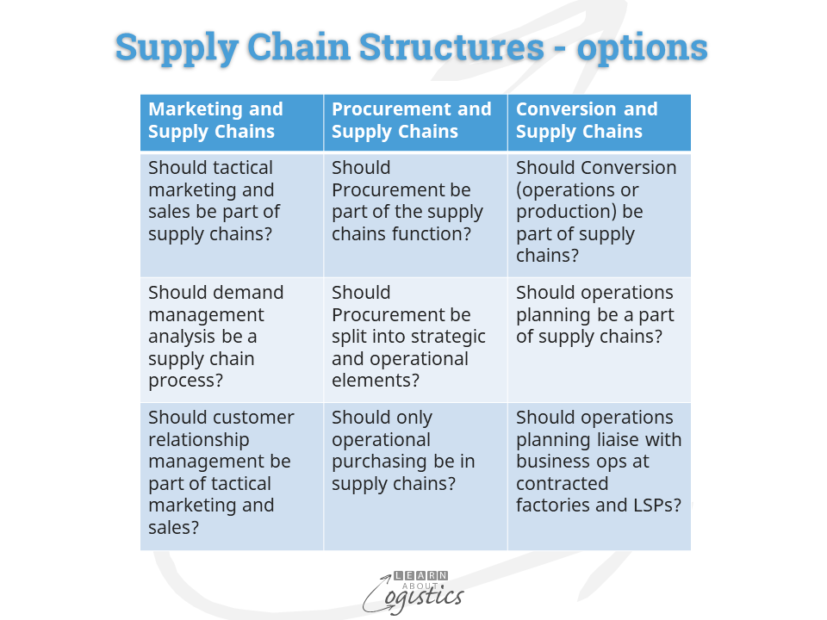Improving supply chains.
For professionals to improve their supply chains, the main challenges have been identified in a questionnaire study as ‘resistance to change’ and ‘retention of talent’.
eft, the logistics research and events company has noted in its Supply Chain report 2018 that “If logistics service providers (LSPs), manufacturers and retailers all state that resistance to change is their biggest barrier to innovation, then that isn’t a company by company problem – that is a cross-industry problem”. Typically, when we read such a statement, the assumption is that ‘resistance to change’ comes from the hourly paid workforce. But resistance to change can exist within the board of directors, senior executives and salaried managers.
Unfortunately, Innovation (achieving an objective in a new way) is the term often used in business and the media to cover any improvement, most of which are about productivity (improving what you are doing). Concerning productivity, the eft report states that “…acquisition and retention of talent is an increasingly important aspect of improving workforce productivity in any supply chain situation”.
Resistance to change
Few of us welcome change – are you resistant to change? What about your team of supply chain professionals? Reasons for change fall into three broad categories:
- As many enterprises continue to view logistics as a cost-based rather than a value-adding function, reducing costs will remain an ongoing reason for change
- For those organisations that look for value addition from their supply chains, change should be a constant feature
- Change can also occur due to restructuring, merger and acquisitions (M&A) and divesting parts of the enterprise
A step to overcoming resistance is providing a management model, identifying ‘how things are done around here’ and how outcomes will be achieved through people (the staff). This model must be adaptable and therefore responsive to change, enabling the supply chain management team to address any changes in the business model.
A management model for supply chains should focused on the managing processes rather than being an operational, or functional (that is, department based) organisation structure. When thinking about management models that can be applied to your supply chains, the overall approach to questions is ‘What is to be achieved?’ Statements of intent need to be agreed within the organisation, with examples being:
- The objective for supply chains is to improve the service experience of external and internal customers
- Identify the points at which the flows of materials and service through the core and extended supply chains may influence the business strategy
- The operational performance of the business is related to the performance of core supply chains
- Logistics management within supply chains comprises the:
- management of internal and external relationships
- providing availability of products and services for customers
- balancing demand and supply, using inventory, information and IT applications
The diagram also provides examples of options to be considered concerning responsibilities and relationships within the organisation for various supply chain functions:

Retention of talent
In the statements of intent listed above, number one is that “The objective for supply chains is to improve the service experience of external and internal customers” Improving the service experience therefore requires the supply chain team to be responsive (therefore flexible) in how they approach processes and challenges. A book written from experience in 1989 was Moments of Truth about the turnaround of an airline. Written by the CEO, Jan Carlzon his underlying philosophy concerning customer service was based upon four perceived ‘truths’ about the people working in a service focused organisation:
- Everyone needs to know and feel they are needed
- Giving a person the freedom to take responsibility releases resources that would otherwise remain concealed
- An individual without information cannot take responsibility; an individual who is given information cannot help but take responsibility
- Everyone wants to be treated as an individual
Instead of this perception, he found that managers considered the airline to be the sum of its physical assets – the airline fleet, maintenance bases and administrative processes. Instead, it should be recognised that customers provide the money to pay wages and invoices of the business; moreover, the perception of customers and suppliers was not about the physical assets, but about the contacts between themselves and airline employees.
In 2009, the motivation of employees in organisations was discussed in a TED talk by Dan Pink an author of books about work behaviour. He discussed how people often don’t respond to rewards the way managers think they will. Monetary incentives work best for repetitive, rules-based jobs, but this motivator – ‘if you do this, then you get that’ will typically reduce productivity in cognitive and creative jobs; people take longer and achieve inferior results. And researchers consistently find a similar situation in different cultures and industries.
The reason is that bonuses, commissions and the like make a you narrow your focus. You concentrate on delivering the results that will give you the reward; that is ‘We behave how we are measured’. As a higher proportion of employees now work in more creative roles, narrowing your focus to get a reward is counterproductive. Pink’s proposed approach is that within the management model should be a recognition that if the objective is to look for different answers to challenges, then accept that people want:
- Autonomy – the urge to direct their own lives (money is a part of autonomy – pay people a fair wage, then start motivating them in other ways)
- Mastery – the desire to get better at doing something that matters
- Purpose – to do what we do in the service of something larger than ourselves
So, it appears that if you combine the approach of Calzon and Pink (plus others with similar views) then the acquisition and retention of talent will be improved. The response is Yes… but. The continuing challenge can be the culture within an industry. To illustrate; a recent article in The Conversation identified that research scientist in biology and ecology (who we think of as working in cognitive and creative jobs) can be tempted to fit their research data to suit the hypothesis. Why? Its the incentive about obtaining funding for research:
- ‘Novel’, (meaning positive, significant) research findings are valued by funding bodies more than careful, cautious procedures and replication
- University hiring and promotion practices within academic science has a heavy focus on:
- publication metrics (publish or perish) and they
- overvalue quantity of work and publication at the expense of quality – this helps the university ranking, which attracts funding
Does this situation indicates that people working in jobs that contain a high degree of autonomy require an understanding of ethics? Even if salaries are not a problem and excellent working conditions are in place, it shows there is insufficient knowledge about how people may function under different (and not obvious) incentive structures and conditions. Getting the best outcomes from your staff will remain an ongoing challenge.

